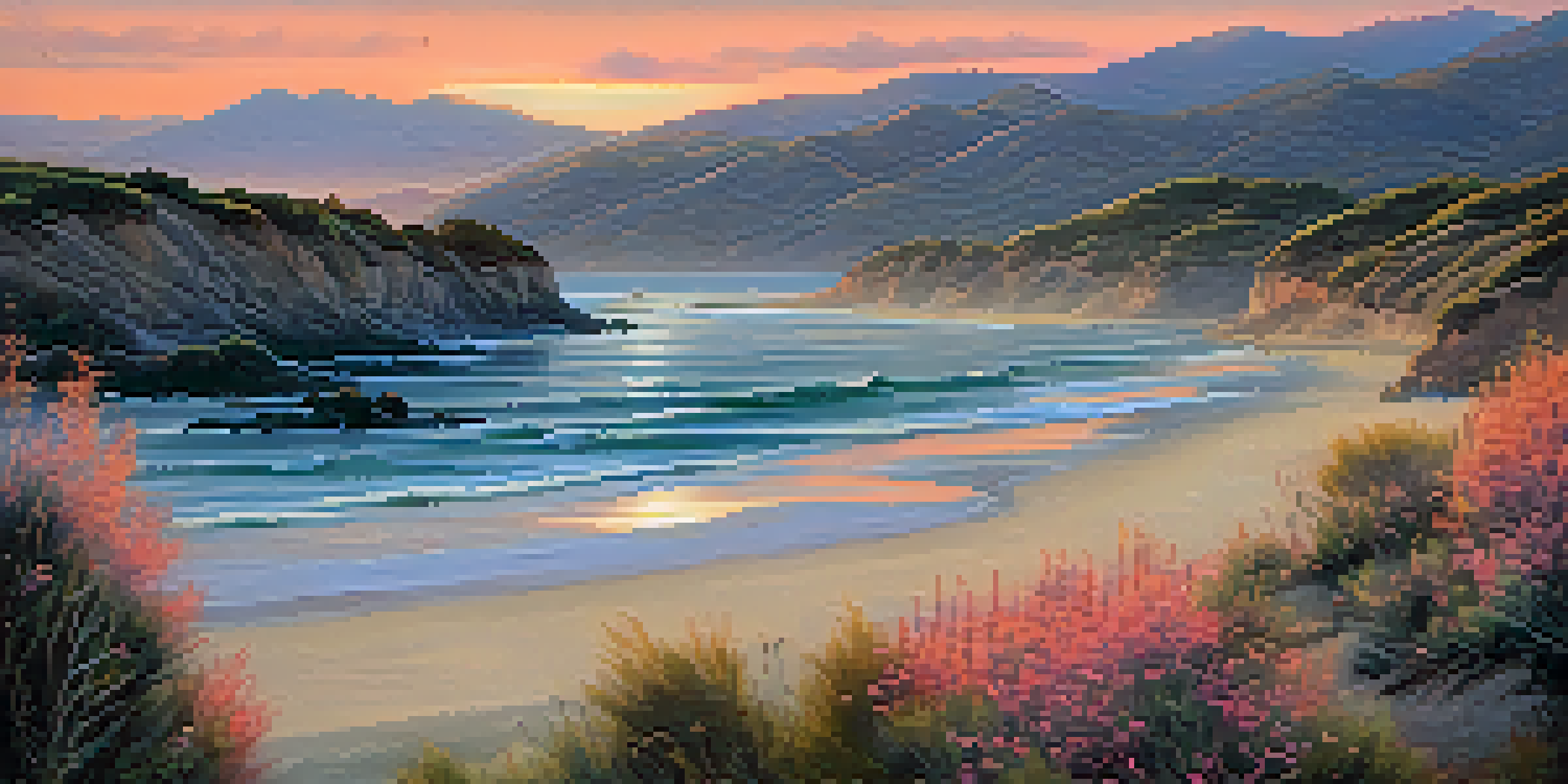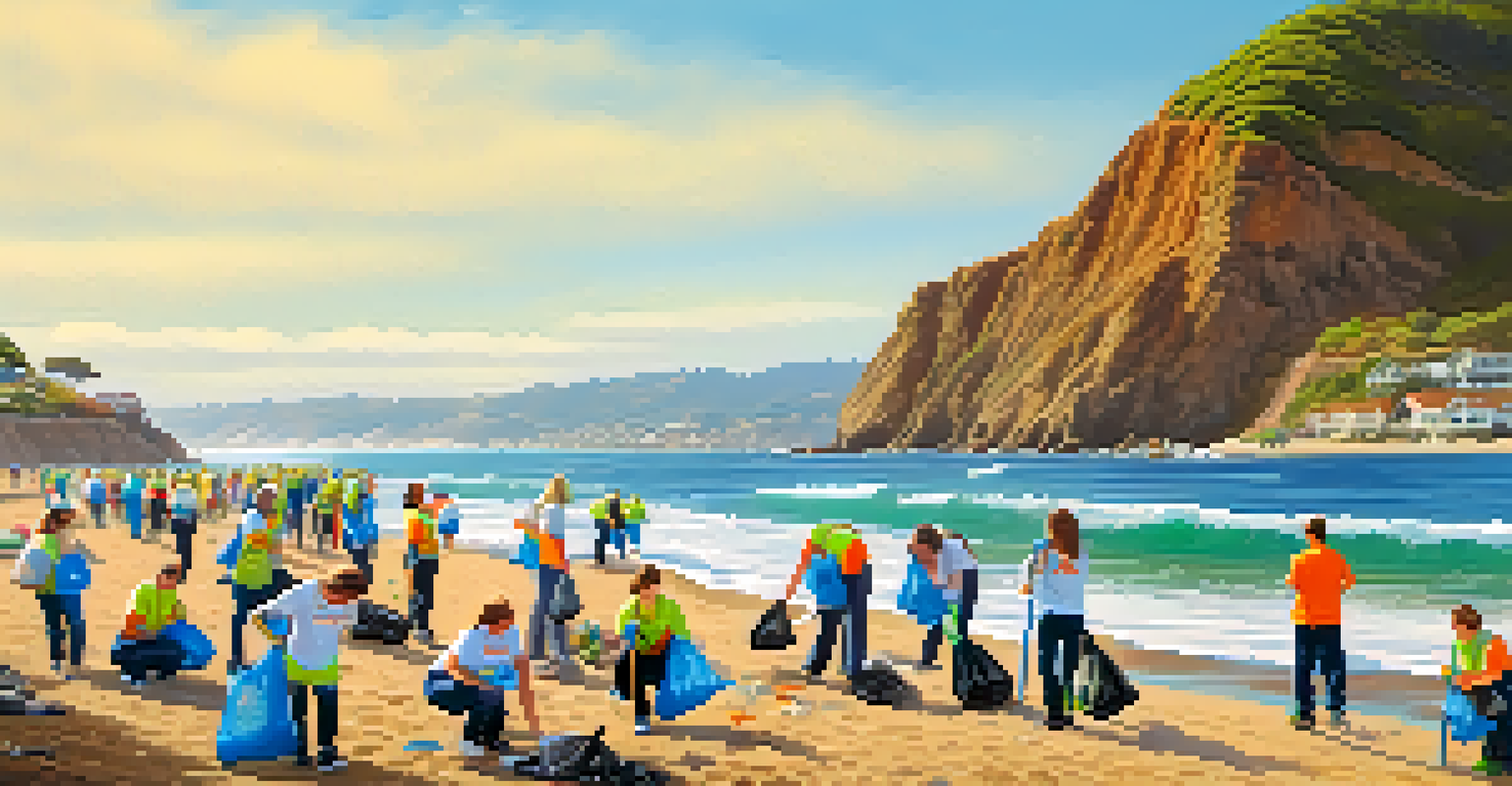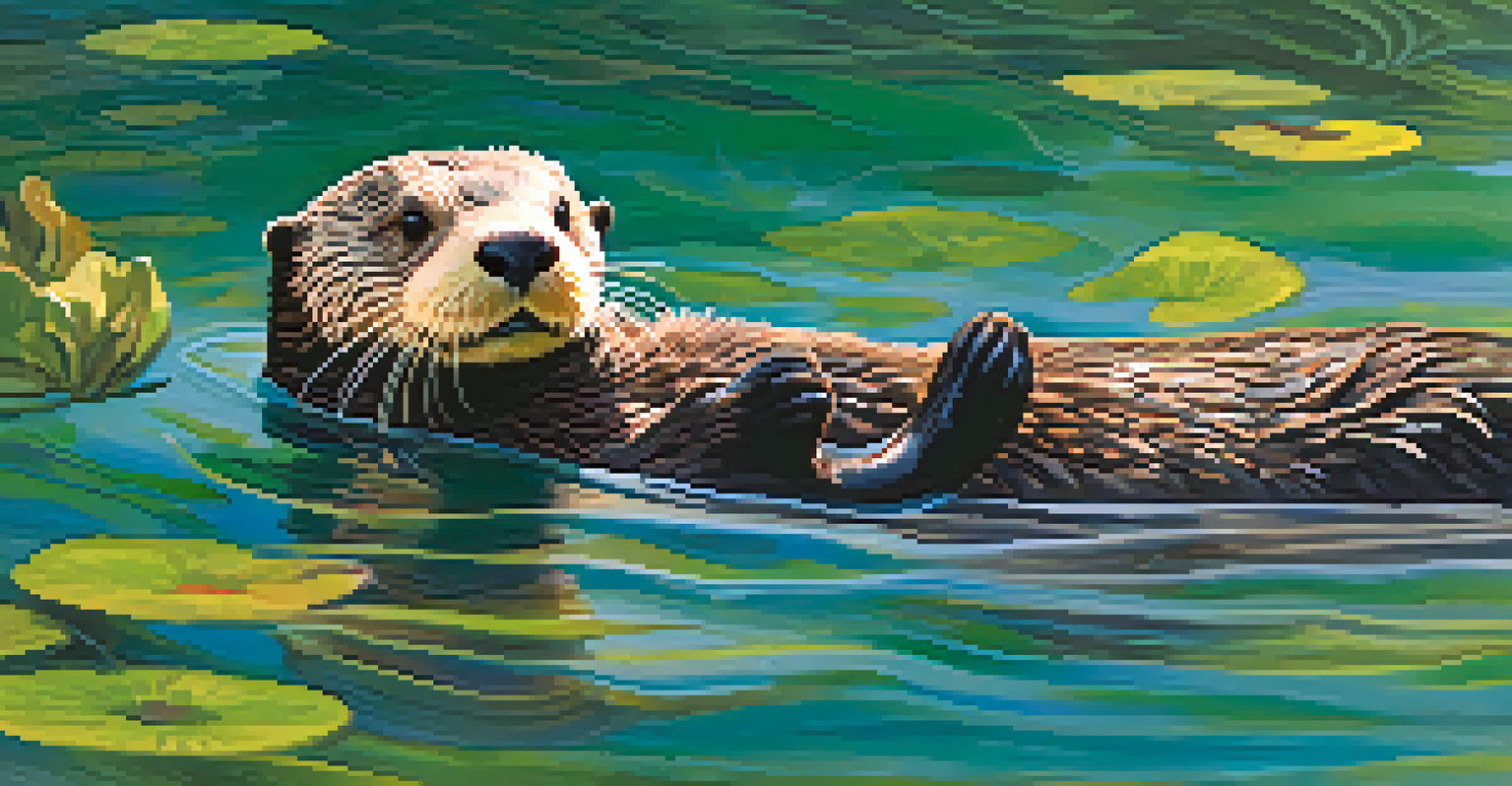Habitat Loss: Protecting Malibu's Native Species and Areas

Understanding Habitat Loss and Its Impact on Biodiversity
Habitat loss refers to the destruction or alteration of natural environments, which can severely impact local wildlife. In Malibu, this not only threatens the beauty of the landscapes but also the unique species that call these areas home. Without their natural habitats, animals struggle to find food, shelter, and mates, which can lead to declining populations.
The greatest threat to our planet is the belief that someone else will save it.
The coastal ecosystems of Malibu, including its beaches and canyons, are particularly vulnerable to human activities such as development and pollution. Think of these ecosystems as the vital organs of a body; when one is damaged, the entire system begins to suffer. Each species plays a critical role in maintaining the balance of its ecosystem, and losing even a single one can have cascading effects.
To combat habitat loss, it’s essential to recognize its signs and understand the factors contributing to it. By raising awareness and fostering a sense of responsibility among residents and visitors alike, we can work together to protect Malibu’s rich biodiversity. After all, safeguarding these environments ensures that future generations can enjoy the same natural beauty.
Key Native Species at Risk in Malibu
Malibu is home to numerous native species, some of which are currently under threat due to habitat loss. For instance, the California gnatcatcher, a small songbird, relies on coastal sage scrub for its nesting and feeding. As urban development encroaches on this habitat, the populations of these birds dwindle, making them a symbol of the broader challenges facing local wildlife.

Another species of concern is the southern sea otter, which plays a crucial role in maintaining kelp forest ecosystems. These playful creatures have been driven to the brink of extinction due to habitat degradation and pollution. Protecting their habitats not only helps them but also preserves the intricate balance of marine life in Malibu's waters.
Habitat Loss Threatens Biodiversity
The destruction of natural environments in Malibu severely impacts local wildlife and disrupts ecosystem balance.
Highlighting the plight of these species serves as a reminder of the delicate interconnections within our ecosystems. Each species, whether it's a bird, mammal, or fish, contributes to the overall health of its environment. By focusing our conservation efforts on these native inhabitants, we can make a meaningful impact on preserving Malibu's natural heritage.
The Role of Local Communities in Conservation Efforts
Local communities play a pivotal role in conserving Malibu's native species and habitats. Engaging residents in conservation initiatives fosters a sense of ownership and responsibility towards the environment. When communities come together for clean-up events or habitat restoration projects, they not only help the ecosystem but also strengthen their bonds with one another.
In every walk with nature one receives far more than he seeks.
Education is another powerful tool in the fight against habitat loss. By teaching people about the importance of biodiversity and the specific needs of local species, we can inspire action. Schools, non-profits, and community organizations can work collaboratively to develop programs that educate and empower individuals to make a difference.
Moreover, advocating for sustainable practices in daily life, such as reducing plastic use or supporting local conservation policies, lays the groundwork for lasting change. Every small effort counts, and when amplified by community involvement, these actions can lead to substantial improvements in the health of Malibu’s ecosystems.
Understanding the Impact of Urban Development
Urban development is one of the leading causes of habitat loss in Malibu. As the population grows, the demand for housing and infrastructure often leads to the destruction of natural landscapes. This not only impacts wildlife but also diminishes the quality of life for residents who value the area's natural beauty.
The expansion of roads, buildings, and recreational facilities can fragment habitats, isolating wildlife populations and making it difficult for them to thrive. Picture a jigsaw puzzle; when pieces are removed or scattered, the image becomes incomplete. Similarly, when habitats are altered, the ecosystems struggle to function properly.
Community Involvement is Key
Engaging local communities in conservation efforts fosters responsibility and strengthens connections to the environment.
To mitigate these impacts, it’s essential for developers and local governments to prioritize sustainable practices. This includes creating wildlife corridors, preserving green spaces, and adhering to environmental regulations. In doing so, we can strike a balance between development and conservation, ensuring that Malibu remains a vibrant ecological haven.
The Importance of Coastal Ecosystems
Coastal ecosystems, like those found in Malibu, are vital for both wildlife and human communities. These areas provide essential services, such as protection from storms, water filtration, and recreation. They also support a diverse range of plant and animal species, contributing to the overall health of the environment.
The interconnectedness of coastal ecosystems is evident when we consider how they influence each other. For example, healthy wetlands can help absorb excess rainfall, reducing flooding in nearby areas. Meanwhile, kelp forests provide habitats for many marine species, which in turn support local fishing economies and tourism.
Recognizing the value of these ecosystems is crucial for effective conservation efforts. By promoting awareness and appreciation for coastal environments, we can inspire actions that protect them. This not only benefits wildlife but also enhances the quality of life for residents and visitors who cherish Malibu’s natural beauty.
Effective Strategies for Habitat Restoration
Restoring habitats is a proactive way to combat the effects of habitat loss. This can involve replanting native vegetation, removing invasive species, and rehabilitating damaged landscapes. Organizations and volunteers often come together to execute these restoration projects, demonstrating the power of collective action.
One successful example is the restoration of coastal sage scrub in Malibu, which has seen efforts to improve the habitat for endangered species like the California gnatcatcher. By focusing on native plants, we can create environments that support local wildlife and enhance biodiversity. It’s like giving the land a second chance to flourish.
Urban Development Impacts Ecosystems
As urban development increases in Malibu, it fragments habitats, making it difficult for wildlife populations to thrive.
Moreover, habitat restoration not only benefits wildlife but also provides recreational opportunities for the community. Restored areas can serve as spaces for hiking, birdwatching, and other outdoor activities that connect people with nature. This dual benefit underscores the importance of prioritizing habitat restoration in our conservation strategies.
How You Can Make a Difference in Malibu
Every individual has the power to contribute to the protection of Malibu’s native species and habitats. Simple actions, like reducing waste or participating in local conservation events, can make a significant impact. By being mindful of our ecological footprint, we can help preserve the natural beauty of this coastal gem.
Additionally, supporting local conservation organizations can amplify these efforts. Whether it's through volunteering, donating, or simply spreading the word about their initiatives, every bit helps. Think of it as planting seeds; with time, these efforts can grow into a thriving community dedicated to wildlife protection.

Lastly, educate yourself and others about the importance of biodiversity and habitat preservation. Sharing knowledge with friends and family can foster a collective commitment to conservation. Together, we can ensure that Malibu remains a haven for native species and a cherished destination for all.